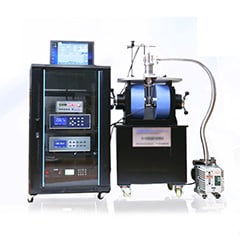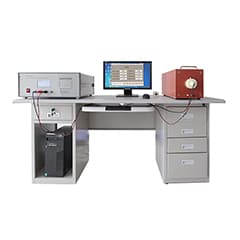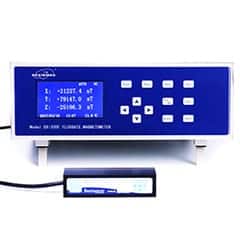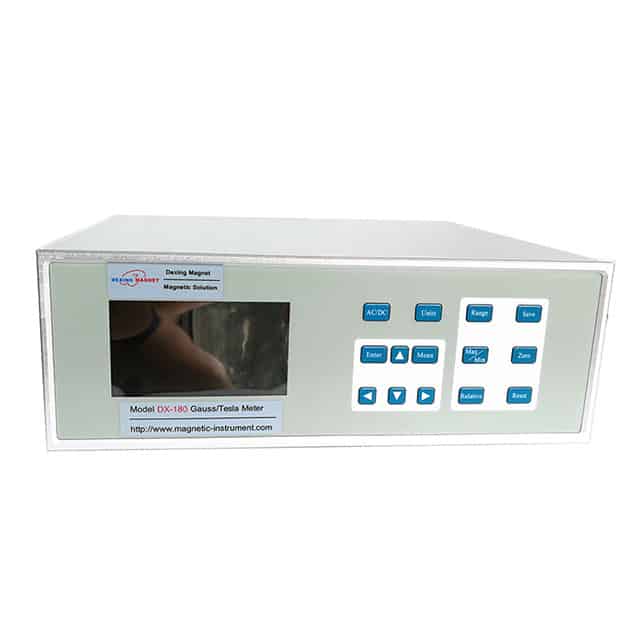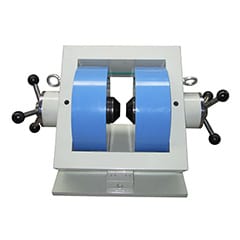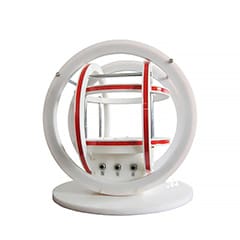products categories
contact us
- If you have questions, please contact us, all questions will be answered
- Tel : 18030236818
- Fax : +86-592 5237901
- Email : dexing@china-dexing.com
Hall Effect Measurement System
magnetic field intensity
The strength of the magnetic field was first derived from the idea of magnetic charge in history. Analogue to the Coulomb's law of electric charge, people believe that there are positive and negative magnetic charges, and put forward the Coulomb's law of magnetic charges. The force exerted by a unit of positive electromagnetic charge in a magnetic field is called the magnetic field intensity H. Later, Ampere put forward the molecular current hypothesis, that there is no magnetic charge, the essence of magnetic phenomenon is molecular current. The intensity of the magnetic field is denoted by the magnetic induction intensity B. However, in the magnetization of magnetic media, the magnetic field intensity H still plays an important role as an auxiliary derived quantity.
The physical quantity describing the properties of a magnetic field. Let's call it H. The formula is defined as, where B is the magnetic induction intensity, M is the magnetization intensity, μ0 is the permeability in vacuum, μ0=4π×10-7 tesla · M/amperes. H is in ampere per meter. The unit of H in the Gaussian system is the Oster. 1 ampere/meter =4π×10-3 osts
Historically, the magnetic field strength H has been defined from the point of view of magnetic charge. The magnetic charge point of view is summarized from the study of the interaction problem of permanent magnets. At that time, we did not know the relationship between magnetism and current, because bar magnets have N and S poles, and like poles repel each other, opposite poles attract each other, which is very similar to the interaction between positive and negative charges, so the permanent magnet is compared with the charged body, assuming that the magnetic poles are formed by the distribution of magnetic charge. The magnetic charge at the N pole is called positive, and the magnetic charge at the S pole is called negative. Like magnetic charges repel each other, unlike magnetic charges attract. When the alignment of the magnetic poles themselves is much smaller than the distance between the positive and negative poles, the magnetic charge on the poles is called point charge.
Coulomb obtained the law of interaction force between magnetic charges at two points through experiments, which is called magnetic Coulomb's law, and is expressed as, where K is the proportional coefficient, which is related to the unit selection of each quantity in the equation, Qm1 and Qm2 represent the value of magnetic charges at each point, γ is the distance between magnetic charges at two points, and is the unit vector on the line between them. From the point of view of magnetic charge, the magnetic field intensity H is defined as such a vector: its magnitude is equal to the force exerted by the magnetic charge at a certain point in the magnetic field at a unit point, and its direction is the direction of the magnetic force exerted by the positive magnetic charge at that point. H=Fm/ QM0, where QM0 is the magnetic charge of the magnetic pole at the trial point, and Fm is the magnetic force that QM0 receives in the magnetic field. Obviously, corresponding to the electric field intensity formula of point charge, the magnetic field intensity formula of point magnetic charge is H= κQm /γ2r. It is reasonable to call H the magnetic field strength from the point of view of magnetic charge, which corresponds to E. From the point of view of molecular currents, magnetic fields are generated by currents (moving charges) and exert forces on currents (moving charges). The properties of magnetic field are defined as B(B=F maximum/I2DL2, B=F maximum/QV perp) from the perspective of current element, moving charge and so on acting on the force in the magnetic field. Obviously, B corresponds to the electric field intensity E. B should have been called magnetic field intensity. Since the term magnetic field intensity has been occupied by H historically, B is called magnetic induction intensity. The idea of magnetic charge has historically been put forward entirely on the basis of an analogy with electric charge, and no single magnetic charge has been found experimentally. In 1931 Dirac proposed the existence of magnetic monopole from the point of view of quantum mechanics. Currently, it has not been found, but it has not been denied. It is still a research subject. The microscopic models of molecular current and magnetic charge are different, but the macroscopic results are exactly the same. Regardless of the existence of magnetic charge, it is often relatively simple to adopt the view of magnetic charge in the discussion of permanent magnet problems, and it still has application value today.






